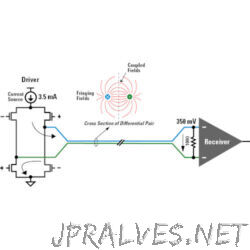Other

“I had several broken laptops sitting around, so I decided I would make a smart photo frame out of one of them.”

Low-voltage differential signaling, or LVDS, also known as TIA/EIA-644, is a technical standard that specifies electrical characteristics of a differential, serial communication protocol. LVDS operates at low power and can run at very high speeds using inexpensive twisted-pair copper cables. LVDS is a physical layer specification only; many data communication standards and applications use it and add a data link layer as defined in the OSI model on top of it. LVDS was introduced in 1994, and has become popular in products such as LCD-TVs, automotive infotainment systems, industrial cameras and machine vision, notebook and tablet computers, and communications systems. The typical applications are high-speed video, graphics, video camera data transfers, and general purpose computer buses. Early on, the notebook computer and LCD display vendors commonly used the term LVDS instead of FPD-Link when referring to their protocol, and the term LVDS has mistakenly become synonymous with Flat Panel Display Link in the video-display engineering vocabulary.

“I had several broken laptops sitting around, so I decided I would make a smart photo frame out of one of them.”